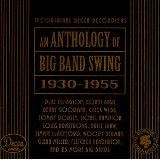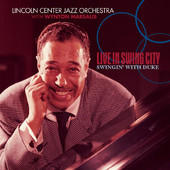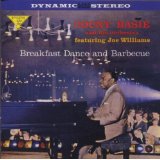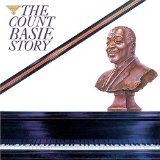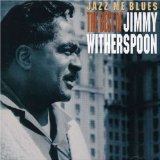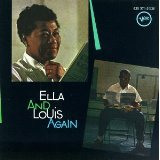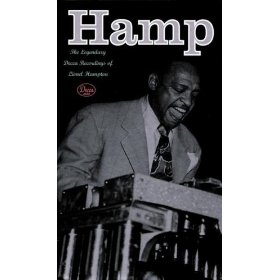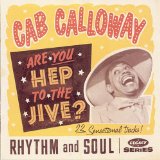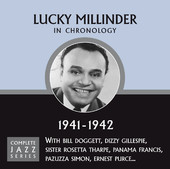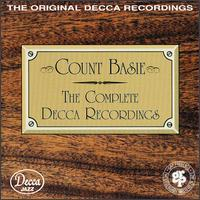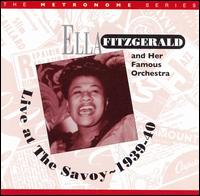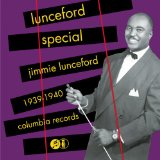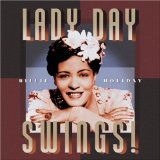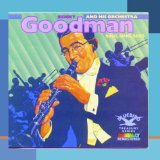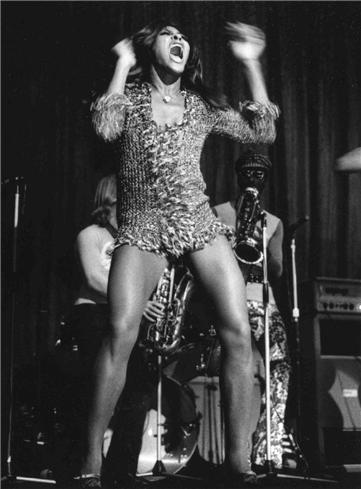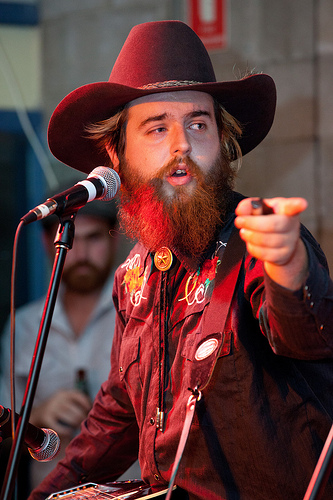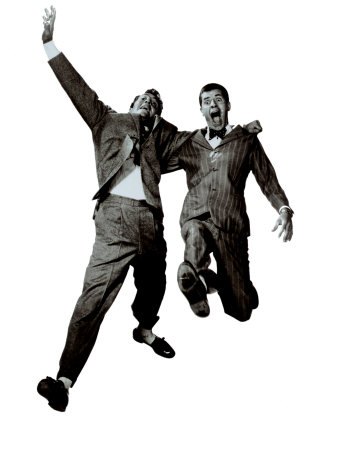
[Portrait of Charlie Shavers, National studio, New York, N.Y., ca. May 1947] (LOC), originally uploaded by The Library of Congress.
I’m a big fan of Charlie Shavers, but I didn’t realise I was until I started getting nerdy with the discographies. As I added musicians to song information in my collection I realised his name just kept popping up, mostly with other artists I love. So I’ve made an 8track of some songs from my favourite bands.
You can read his own account of his life in this little autobiographical piece, Charlie Shavers: About the Size of It (talking to Les Tomkins in 1970). But here are some interesting things about Charlie Shavers:
- he played the trumpet;
- he composed the song ‘Undecided’ (I’ve chosen a 1939 version where he plays with Fats Waller);
- he played in Lucky Millinder’s band (but I didn’t include any of these songs);
- he played the banjo and piano before the trumpet.
There are plenty of other things to say about Charlie Shavers, but I’d rather listen to his music.
Here’s the set list for this 8track. It’s mostly smaller bands, I’m afraid, even though Shavers did so much work with big bands. But this probably a more accurate indication of my tastes!
Four Or Five Times – Jimmie Noone and his Orchestra (Charlie Shavers, Pete Brown, Frank Smith, Teddy Bunn, Wellman Braud, O’Neil Spencer, Teddy Simmons) – 173 – Jimmie Noone 1934 – 1940 – 1937 – 3:09
Sloe Jam Fizz – Buster Bailey and his Rhythm Busters (John Kirby, O’Neil Spencer, Charlie Shavers) – 147 – Buster Bailey: Complete Jazz Series 1925 – 1940 – 1938 – 2:26
Blue Monday On Sugar Hill – Coot Grant (Leoloa B. Wilson), Kid Wesley ‘Sox’ Wilson, Charlie Shavers, Sidney Bechet, Sammy Price, Teddy Bunn, Richard Fullbright, O’Neill Spencer) – 213 – Charlie Shavers and The Blues Singers 1938-1939 – 1938 – 2:17
Blues Galore – Johnny Dodds and his Chicago Boys (Charlie Shavers, Lil Armstrong, Teddy Bunn, John Kirby, O’Neil Spencer) – 148 – Complete Jazz Series 1928 – 1940 – 1938 – 2:47
Them There Eyes Billie Holiday and her Orchestra (Charlie Shavers, Tab Smith, Kenneth Hollon, Stanley Payne, Sonny White, Bernard Addison, John Williams, Eddie Dougherty) – 180 – Lady Day: The Complete Billie Holiday On Columbia (1933-1944) (Disc 06) – 1939 – 2:51
Fine and Mellow – Charlie Shavers with Alberta Hunter – 87 – Charlie Shavers and The Blues Singers 1938-1939 – 1939 – 2:52
Undecided – Fats Waller and his Rhythm (Herman Autrey, Gene Sedric, Al Casey, Cedric Wallace, Slick Jones) – 97 – The Middle Years – Part 2 (1938-1940) (disc 2) – 1939 – 3:38
Effervescent Blues – John Kirby Sextet (Charlie Shavers, Buster Bailey, Russell Procope, Billy Kyle, William ‘O’Neill’ Spencer) – 119 – John Kirby Sextet: Complete Columbia and RCA Victor Recordings (disc 01) – 1939 – 2:50
Royal Garden Blues – John Kirby Sextet (Charlie Shavers, Buster Bailey, Russell Procope, Billy Kyle, William ‘O’Neill’ Spencer) – 276 – John Kirby Sextet: Complete Columbia and RCA Victor Recordings (disc 01) – 1939 – 2:33
Come Easy Go Easy – Rosetta Howard acc. by the Harlem Blues Serenaders (Charlie Shavers, Buster Bailey, Lil Armstrong, Ulysses Livingston, Wellman Brand, O’Neil Spencer) – 90 – Rosetta Howard (1939-1947) – 1939 – 3:03
St. Louis Blues – John Kirby Sextet (Charlie Shavers, Buster Bailey, Russell Procope, Billy Kyle, Gordon ‘Specs’ Powell) – 221 John Kirby Sextet: Complete Columbia and RCA Victor Recordings (disc 02) – 1941 – 2:45
Oh I’m Evil – Una Mae Carlisle with Charlie Shavers, Buster Bailey, Russell Procope, Billy Kyle, John Kirby, O’Neil Spencer – 158 – Una Mae Carlisle: Complete Jazz Series 1938 – 1941 – 1941 – 2:25
Don’t Tetch It! – Una Mae Carlisle with Charlie Shavers, Buster Bailey, Russell Procope, Billy Kyle, John Kirby, O’Neil Spencer – 191 – Una Mae Carlisle: Complete Jazz Series 1941-1944 – 1942 – 2:21
Long, Long Journey – Esquire All-American Award Winners (Louis Armstrong, Charlie Shavers, Jimmy Hamilton, Johnny Hodges, Don Byas, Duke Ellington, Billy Strayhorn, Remo Palmieri, Chubby Jackson, Sonny Greer) – 103 – The Duke Ellington Centennial Edition: Complete RCA Victor Recordings (disc 17) – 1946 – 4:31
I Cried For You – Billie Holiday and her Band (Charlie Shavers, Oscar Peterson, Herb Ellis, Ray Brown, Ed Shaughnessy) – 115 – The Complete Verve Studio Master Takes (disc 2) – 1954 – 2:28
Easy Does It – Big Eighteen (Billy Butterfield, Buck Clayton, Charlie Shavers, Rex Stewart, Lawrence Brown, Vic Dickenson, Lou McGarity, Dicky Wells, Walt Levinksy, Hymie Schertzer, Sam Donahue, Boomie Richman, Ernie Caceres, Johnny Guarnieri, Barry Galbraith, Milt ) – 129 Echoes of the Swinging Bands – 1958 – 5:14
‘Four or Five Times’ is quite a well-known song. Jimmie Noone first recorded it in 1928, but I love this later version that includes Shavers. It has a lovely, light, swinging feel.
‘Sloe Jam Fizz’ is by Buster Bailey and his Rhythm Busters, and includes not only Charlie Shavers, but also John Kirby, who Shavers later went on to work with.
‘Blue Monday on Sugar Hill’, credited to Grant and Wilson, is a fun song featuring lots of famous people – Sam Price, Sidney Bechet, O’Neil Spencer. It reminds me of Lil Armstrong’s band. The Bechet-Shavers connection is pretty interesting.
‘Blues Galore’ is another nice song, this time by Johnny Dodds and His Chicago Boys, which again features John Kirby, O’Neil Spencer and Charlie Shavers, but this time Lil Armstrong is credited. I reckon this song really heralds the type of stuff Kirby’s band did later – quite a light, gentle touch, but with a really solidly swinging rhythm, perhaps a bit more insistent than in Kirby’s small groups later on. The vocals are great.
‘Them There Eyes’ is a bit different to the earlier songs, but I think that Shavers’ style really helped develop Holiday’s sound during this period. I don’t think this song is as good as a lot of the stuff she did with Teddy Wilson, for example, but there’s much in common. I think Shavers and Wilson have a similar approach to songs, so it’s not too surprising to find them together with a musician like Billie Holiday.
I don’t know much about this version of ‘Fine and Mellow’ as it’s just new to my collection, but I couldn’t resist the connection with Holiday, who of course recorded a very famous version of this song. I like this version, though, for Alberta Hunter’s gravelly vibrato contrasting with Shavers’ tootly and growly trumpet.
This nice, light version of ‘Undecided’ is a nice antidote to the laboured versions which are overplayed in the lindy hopping world. I loooove the way Shavers’ sense of humour blends perfectly with Wallers’. There’s a wheedly, whiney tone that winkles its way into your ear.
‘Effervescent Blues’ is probably one of the better known Kirby band songs in the lindy hop world, mostly because it was covered by the Mora’s Modern Swingtet. I like the rolling piano matched with the tootly melody. It has the light touch I associate with the Shavers/Kirby pairing, but it’s not as light and complicated-feeling as their later stuff.
‘Royal Garden Blues’ is tootly. It’s super fast and complicated. It really is a good example of what some people call ‘chamber jazz’. I love it. I like the way this group has a lot in common with Benny Goodman’s small groups, but actually has quite a different feel.
‘Come Easy Go Easy’ is completely different – Rosetta Howard isn’t subtle or tootly or tinkly. But Shavers’ whiney trumpet sets off her grittier style really nicely. This line up is again, quite familiar, and it echoes those earlier songs with blues singers. It’s interesting to see that Shavers was doing this in the same year as that busybusy Kirby group stuff.
Two years later, the Kirby Sextet has really set off on its course. This version of ‘St Louis Blues’ is complicated small group jazz. Hot, but also quite finessed.
I’m a big fan of Una Mae Carlisle. She’s got a sophisticated style, but can really get hot. Her timing is wonderful – she just sits back there behind the beat. I like the way she works with that little band, that’s pretty much the same gang as in all those other small Shavers’ groups.
Four years later, this Esquire all star band is something completely different. It’s commercial jazz at its most extravagant.
I added in ‘I cried for you’ just as an example of how Holiday’s style changed, and how she and Shavers still work together so well. This is magical, particularly with the addition of Oscar Peterson and Ray Brown.
‘Easy Does It’ is another of those ‘stunt bands’ put together in a kind of mishmash of big names. But this is a great song, and it always reminds me of Frankie Manning.
[EDIT]Trev has just pointed out that I missed the part where Charlie Shavers was with the Mills Blue Rhythm Band. This is a bit of an oversight on my part, to be explained by the fact that I didn’t actually own the 1937 MBRB stuff. This has been rectified.[/]

